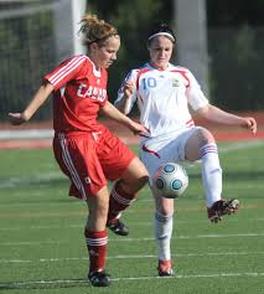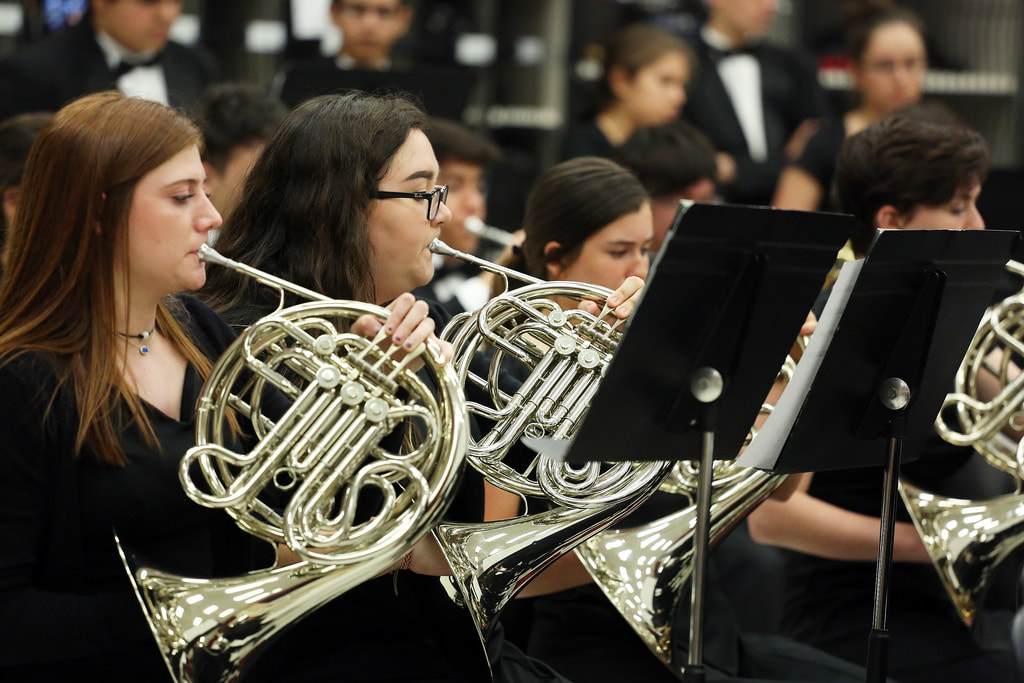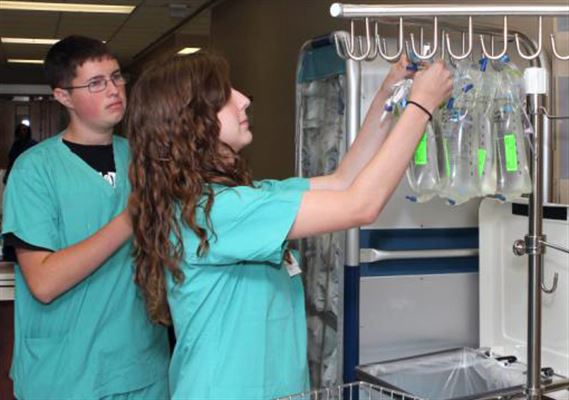|
Written by Lily McIntyre
Hey everyone! I hope you’ve all been staying well and are taking good care of yourselves. For the next couple of weeks, I’ll be starting a series of essay-writing tips that may help you as you navigate the college essay/application process. Keep reading for the first tip, and don’t forget to keep an eye out for the next edition of this series! Your story should help, not hurt you: If you’re to get anything out of this post, I hope it’s this: Don’t let your story hold you back in your essay. You might have a really interesting story, but it might be too specific and limit you from talking about everything you want to in a coherent way. If this applies to you, maybe think of a general metaphor that you can weave mini-stories into instead. For my own college essay, I talked about my favorite word game, Bananagrams. I exhibited my personal growth by starting off with a scene from when I was a kid playing Bananagrams in which I traded in my hard letters like Q and X in for easier ones to make words with. I related this story to parts of my life in which I took the easy way out and shied away from challenges. Later in the essay, I gave examples from when I grew older that showed my rising up to challenges and facing my fears. Finally, I tied it all together by discussing a game of Bananagrams in the present day where I didn’t trade in my letters and made creative words with the more difficult letters I already had. As someone who was going through this process a couple of years ago, I understand how difficult writing your essay can be. Remember to take care of yourselves and prioritize you throughout this process!
0 Comments
Info on how COVID-19 might affect your high school experience as it relates to college applications:
For seniors receiving decisions letters back from colleges:
AP and SAT/ACT Exams:
College visits:
Please double check with schools as decisions notifications can change!
There's not much of a difference between Early Decision 1 and Early Decision 2 - except for the timing. Students that know that they have a first choice school, and will go regardless of being accepted elsewhere, have the opportunity to apply a bit earlier. The timing for these 2 rounds are different with Early Decision 2 deadlines closer to the deadlines of Regular Decisions, but that the notification of Early Decision candidates is typically in February instead of late March/April. Here's a list of schools with the option to submit and Early Decision 2 (ED2) application:
Here's a list - Stanford (our alma mater) comes out today!
Barnard College: Mid-December Boston College: December 5th, 5:30pm EST (Early Decision I) Boston University: December 15 Brandeis University: December 15 Brown University: Mid-December Cal Tech: Mid-December Carnegie Mellon University: December 15 Columbia University: December 12th, 7pm ET Cornell University: December 12th, 7pm ET Dartmouth College: Mid-December Duke University: December 15th Emory University: By December 15 Georgetown University: December 15th Harvard University: Mid-December Harvey Mudd: December 15th (decisions mailed) Johns Hopkins University: December 13th Middlebury College: Mid-December MIT: December 14th, 12:14pm ET New York University: December 15th (Early Decision I), February 15th (Early Decision II) Northwestern University: Mid-December Notre Dame University: Mid-December Pomona College: By December 15 Princeton University: December 12th Stanford University: December 6th, 4pm PST Swarthmore College: By December 15 Tufts University: Mid-December Tulane University: November 20th, 4pm CST (Early Decision), December 19th, 3:30pm CST (Early Action) University of Chicago: Mid-December (Early Action and Early Decision) University of Michigan, By December 24 University of Pennsylvania, December 16th, 7pm University of Virginia, December 6th, evening (Early Decision), January 31st (Early Action) Vanderbilt University: Mid-December (Early Decision I), Mid-February (Early Decision II) Washington University in St. Louis: Mid-December Wellesley College: Mid-December, ED Round I William & Mary: December 6th, evening (Early Decision I) Williams College: By December 15 Yale University: December 16th  We're so excited for our students who are making decisions on where to head to college with amazing choices such as: Cornell, USC, UChicago, Yale, Caltech, FIT, UCLA, UC San Diego, UC Santa Barbara, Boston College, Cal, Emory, CMU, JHU, and more! Below is a more lengthy list of our successes over the last 5 years. We track our own performance through putting together an academic index for each of the students (test scores + grades + difficulty of coursework + etc.) and comparing it against the 25-75% range (of stats such as testing/GPA) for each school's accepted class. This is in an effort to articulate “outside of #s” performance on the application (and a more accurate picture of where Lucent can have an impact on the application process). Our goal is to have a significant impact as compared to these numbers. We aim to have students gain admission to at least one school in which their academic index falls below the 50% mark at a given school. (Oversimplified example: a student with 1400 on SAT would gain acceptance to a school in which the 25-75% range is 1375-1500). From 2014-2019, all but one student received acceptance into at least one of these schools on their list.^ We stay away from statistics stating that x% of students get into their top 3; we believe that each student’s strategic approach to school selections needs to be tailored to their specific circumstances. For example, students interested in Ivy League admissions might apply to nearly all of the Ivies knowing that admissions is competitive. Or, on the other end of the spectrum, we have had several students each year that apply to just 3-4 schools outside of their backup (e.g. knowing that they did not want to leave a certain region).
A few notes:
^ Many high school counselors working with competitive high school populations benchmark student scores against the 75% of a school’s given a range as opposed to 50%. Nearly all students that work with us are from these types of schools; including major city magnet schools, competitive boarding schools, high schools in the SFBay, and technical high schools in NYC.  You've been soul searching about transferring schools. One factor that's likely going to contribute to your decision making process is what challenges may lie ahead if you do decide to go for it. Here's a list of possible challenges to think about:

However, there are lots of positives that come along with transferring, especially if it's the right decision for you:
While there are lots of challenges to consider, with the right self reflection and research, you may come to the conclusion that it is the best possible decision for you. In which case, you'll be glad you did it!  There is a lot of narrative out there on thoughts for and against transferring schools - so you're not alone if you're reading this (about 25% of students actually transfer!). We've compiled it here into several topics to consider as you go through the process of deciding if putting in applications is right for you: Think twice:

Utilizing the internet has made all parts of our lives easier - finding long lost friends, making reservations for date night, and finding x or y product with the best reviews. Similar to our daily lives, admissions officers have also started using the internet in higher numbers to aid their admissions process. From a Kaplan Test Prep research study, 35% are searching out applicants and 68% consider it fair game to do so, but not all of them actually put it into practice. From the same study, they found that admissions officers were finding positive supporting information for applicants as often as they were finding information that would negatively impact a student’s application. Generally, admissions officers are hoping to find a more holistic version of some students through online searches and social media accounts - looking for additional, positive information about applicants. However, it’s possible to turn off an admissions officer with remarks, posts, and images that violate (or do not align with) the expectation of how students are in a school's student community. Here are some tips and cautionary words about social media for those applying to college/university. Keep these tips in mind for before, during and after college acceptances. Poor form after the fact can mean that a college rescinds their offer of admissions (this includes poor grades as well, don’t let senioritis get to you!): Things not to do...
Consider doing…
Last thought: don’t get too wrapped up in tailoring your presence as the research statistics don’t necessarily merit a lot of effort on this front (for now!). So you've made it through a few years of high school and you're feeling pretty solid about your classes, grades, and extracurricular activities. There are a few more things to now focus on if you're college bound. The most obvious - which schools should I be applying to? Fit is incredibly important and it's something that we stress when working with high school/transfer students. It's about a great match so that you get a lot out of the school, but the school and its community also get a lot out of you as a person. Outside of the usual check on your numbers (SAT/ACT, GPA, etc.), here are a few pointers to consider in the process:
Best of luck in exploring the different schools out there! You're at the tail end of the undergraduate application process - the testing, the interviews, the essays are all behind you now. Whew - congrats on completing an intense process. And, if you're reading this article, my guess is that you also have choices ahead of you. Wonderful.
So, which college/university? I've compiled a few tactics to thoughtfully review the choices at hand.
Best of luck on your decisions! What does it mean?
Well, congratulations! It might feel like another rejection, but what the wait list means is that you're one of the applicants that the university finds qualified to be part of the community - just that there wasn't enough space for everyone. Due to the competitiveness of many colleges and universities, it means that there were several students just as qualified as you, and perhaps there was something else that someone else had that the admissions officers found would contribute to the mix of this particular class. Typically the difference between accepted students and those that are wait listed are arbitrary and minor. Pat yourself on the back for this accomplishment. What to do next? If you'd like to be on the wait list, you must actively notify the university. Follow the instructions included in the notice/letter and be sure to respond. There are several things to do and not do to better your chances of getting off the wait list. However, many competitive universities only accept small percentages of students off their wait lists, so be sure to put down a deposit at a school in which you'd be happy to go to otherwise. Most schools accept students off the wait list after the May 1 decisions requirements of those that were accepted before pulling from the wait list. Things to keep in mind:
Best of luck on school decisions! Nervousness and anxiety when it comes to standardized testing is pretty common - so, you're not alone. The anxiety or fear is actually a sign that your body is ready to focus on the task ahead, all that remains is how your harness that energy. Here are some tactics to keep cool and calm so that you perform your best on test day.
Months/weeks leading to the test:
Day of:
 I can't believe how much university/college tuition has risen over the last few decades! If you're a senior that has decided (back on May 1) which college you'll be attending, you might be overwhelmed about how to fill the gaps that you likely have in your financial aid package. After all those essays from the admissions process, you're likely to want to take a break from anymore writing or submission of applications - but don't! Applying to scholarships is actually worth your while as there are many students that do sit back and relax and don't even bother to apply. This ups your odds of getting some aid. And, many of the times, you won't need to submit a personal statement. And very likely, you'll find that you can recycle a lot of the work that was completed back in the fall! LOCAL SCHOLARSHIPS We highly advocate for prioritizing application to local scholarships. There are many of them, while at a lower gift, you're more likely to actually receive the award. There are a few places in which you can search for all types of scholarships, specifically for local scholarships...
ONLINE SEARCH You can find both national, regional, and local scholarships online. Our favorite websites for the search are:
Again, if you don't apply, you won't get anything! And lots of smaller scholarships can make a significant dent in tuition costs. So, while we aren't telling you to avoid the big, prestigious scholarships, we do encourage you to apply to many of the opportunities that may have smaller awards that have less competition and better your odds of securing funds. Best of luck on the scholarship search and application process! |
About Lucent:College, Graduate School, and Career Coaching. Archives
May 2022
Categories
All
|



 RSS Feed
RSS Feed
